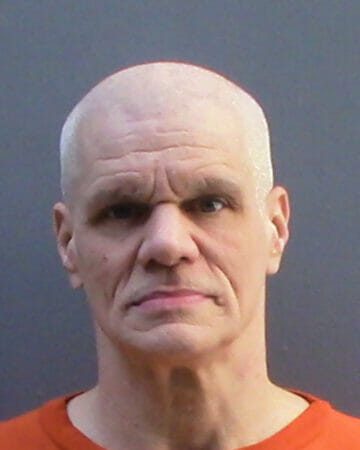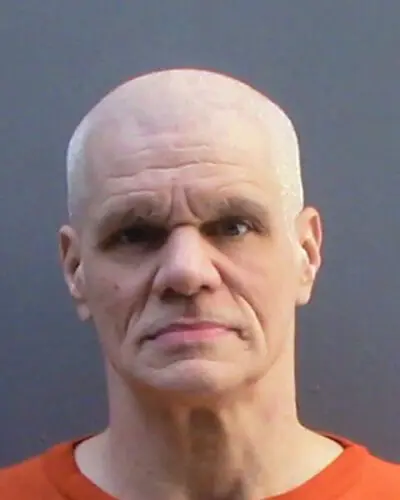
Leroy Cropper was sentenced to death by the State of Arizona for a prison murder. According to court documents Leroy Cropper was upset with a correctional guard after his cell was searched and he was placed on lock down status due to contraband found in his cell. Leroy Cropper working with two other inmates, Eugene Long and Joshua Brice, made a plan to kill the Officer. Leroy Cropper was able to get his hands on a metal shank and get out of his cell with help from the other inmates. Cropper would sneak up behind Officer Lumley and stabbed him twice in the neck. Leroy Cropper would be convicted and sentenced to death.
Leroy Cropper 2021 Information
ASPC Eyman, Browning Unit
PO Box 3400
LEROY D. CROPPER 091432
Florence, AZ 85132
United States
Leroy Cropper More News
On March 7, 1997, Cropper murdered Arizona Department of Corrections Officer Brent W. Lumley, stabbing him in the throat. The murder took place at the Arizona Department of Corrections Perryville/San Juan Unit, where Cropper was an inmate. Cropper committed the murder in response to being “locked down” after Officer Lumley found a knife and other contraband in his cell.
Leroy Cropper Other News
On March 7, 1997, ADOC corrections officers at the Perryville State Prison in Goodyear, Arizona, discovered that some mops were missing from the Building 26 supply room. Officers Brent Lumley and Deborah Landsperger began searching for the missing mops in the nearby cells. They found no mops in the first cell searched, number 257, occupied by inmates Eugene Long and Bruce Howell. The officers moved on to the adjacent cell, number 258, which held inmates Cropper and Lloyd Elkins. While searching cell 258, Officers Lumley and Landsperger uncovered various contraband items, including a knife, tattooing equipment and a possible “hit” list. While the officers conducted the search, Cropper repeatedly approached and entered the cell, yelling at the officers and complaining of the search. The search obviously distressed Cropper, who believed the officers disrespected him and his property, and he became enraged because the searchers damaged a photograph of his mother. After Officers Lumley and Landsperger finished their search, they placed Cropper and Elkins on “lockdown” status in their cell, whereby their cell door was locked from the master control panel in the control room and the two inmates were unable to leave.
¶ 3 Through his cell door and a common vent between cells 257 and 258, Cropper spoke to several fellow inmates about his plan to kill Officer Lumley. Inmates Eugene Long and Joshua Brice agreed to help and retrieved an eight-inch steel carving knife buried in one of the Building 26 yards. Using two fly-swatters attached to one another, Long passed Cropper the knife through the vent between the two cells. The inmates in cell 257 then passed a right-handed glove through the vent to Cropper. Cropper removed a lace from one of his shoes and wrapped it around the knife handle to provide a better grip.
¶ 4 Cropper needed to find a way out of his cell. An inmate is able to leave a locked cell if a fellow inmate “spins the lock” to his cell door. This lock picking procedure, performed manually on the cell door lock from outside the cell, bypasses the control room’s electronic lock command. Howell and another inmate, Arthur Zamie, successfully opened the door, and then looked for Officers Lumley and Landsperger. Howell and Long returned to Cropper’s cell and told him that Lumley was in the control room, with the door unlocked.
¶ 5 Cropper left his cell, walked down the hall and entered the control room. Cropper snuck up behind Officer Lumley and thrust the knife into his neck, partially pulled it out, then pushed it in a second time from another direction. By the time Cropper finished, Lumley suffered a total of six stab wounds. Cropper left the control room, leaving the knife protruding from his victim’s neck.
¶ 6 Cropper ran back to his cell from the control room and found the cell door locked. He tried to enter another locked cell and eventually reached cell 257, where he found the door unlocked. As he entered, he told Howell, who was inside cell 257, “I got him.”
¶ 7 Cropper’s clothes were covered with blood. He removed his sweatshirt and undershirt and threw them into Howell’s trash can. He tore off a name tag sewn on the collar of his shirt and flushed it down Howell’s toilet.
¶ 8 Cropper returned to his cell after an unidentified inmate spun the cell door lock. Cropper’s cellmate Elkins helped him wipe away the blood on his body. Cropper also soaked his pants and shoes in a mixture of water and laundry detergent to clean off the blood.
¶ 9 Meanwhile, Howell gathered the bloody clothes from his trash can and placed them inside a garbage bag, which he threw onto the Building 26 roof. Howell then wiped blood from the door knob to Cropper’s cell with one of his socks. DNA tests showed that the blood recovered from Cropper’s shoes, underwear and the glove was consistent with Lumley’s blood.
¶ 10 On April 14, 1997, a grand jury indicted Cropper for first degree murder and other counts related to Officer Lumley’s death. On May 4, 1999, Cropper pled guilty to all counts. The State filed its list of aggravating factors on May 13, 1999, indicating it would seek to prove the murder was committed (1) in an especially cruel, heinous or depraved manner, A.R.S. section 13-703.F.6, and (2) while the defendant was an ADOC inmate, A.R.S. section 13-703.F.7.
¶ 11 On December 12, 1999, while in the custody of the Maricopa County Sheriff’s Office awaiting the Lumley murder sentencing proceeding, Cropper stabbed a fellow inmate, Antoin Jones, for which he faced an aggravated assault charge. During a telephone conference on December 15, 1999, the State asked the trial court to continue the upcoming capital aggravation/mitigation hearing pending the outcome of the aggravated assault case. The prosecutor advised the court and Cropper’s attorney that the State would seek to prove a prior serious conviction aggravating circumstance under A.R.S. section 13-703.F.2 if Cropper was convicted of aggravated assault. On April 11, 2000, at the opening of the initial capital aggravation/mitigation hearing, the prosecutor again told the court, Cropper and his attorney that the State would use an aggravated assault conviction as an aggravating circumstance. On April 18, 2000, the court granted the State’s motion to continue the hearing pending the outcome of Cropper’s aggravated assault case. Cropper pled guilty to one count of aggravated assault for the Jones stabbing on June 22, 2000.
¶ 12 Following the close of the aggravation/mitigation hearing on October 13, 2000, the trial court found that the State had established three aggravating circumstances. In its special verdict dated November 3, 2000, the court found (1) Cropper had been convicted of a prior serious offense, A.R.S. section 13-703.F.2; (2) Cropper committed the murder in an especially cruel manner, A.R.S. section 13-703.F.6; and (3) Cropper committed the crime while in the custody of the ADOC, A.R.S. section 13-703.F.7.3 The court also found two mitigating circumstances: (1) Cropper had a strong relationship with certain members of his family and (2) he felt and expressed remorse for Officer Lumley’s death. After considering the aggravating and mitigating circumstances, the court concluded that the mitigating circumstances were not “sufficiently substantial to call for leniency.” A.R.S. § 13-703.E. The court sentenced Cropper to death. This appeal followed.








